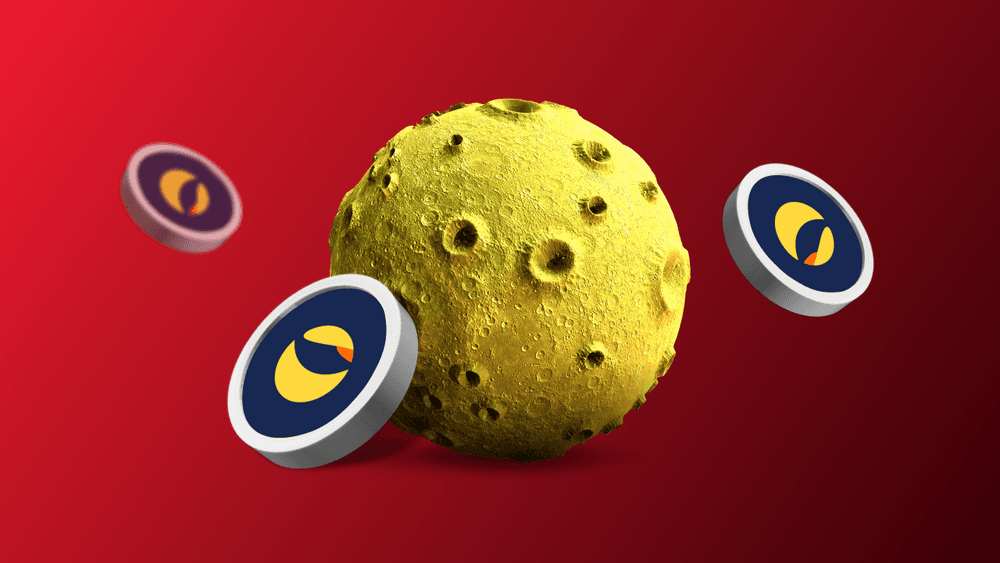- Home
- News and analysis
- Articles
- The Fall Has Been Foreseen? Biggest Ever Crypto Collapse and Conspiracy Theories
The Fall Has Been Foreseen? Biggest Ever Crypto Collapse and Conspiracy Theories


Do you recall that harsh crypto winter of 2018 that didn’t just refer to the winter months? These memories raise fears that the same thing will happen again after two major cryptocurrencies, TerraUSD and LUNA, collapsed sharply over the past week.
Mentions of a possible crypto winter in May 2022, flooded social media amid the latest downfall. While the situation is still ongoing, the crypto community is discussing a number of conspiracy theories, suggesting what may have led to the collapse of a crypto empire.
Terra (LUNA) collapsed by more than 99% in May 2022, causing its market capitalization to shrink by more than $40 billion.
Luna Foundation Guard, the second largest known Bitcoin holder, liquidated almost all of its reserves by billions last week in a failed attempt to protect the Terra UST peg to the US dollar. The ‘depeg’ triggered a reaction that ultimately led not only to the collapse of the UST and Terra (LUNA) cryptocurrencies, but also contributed to Bitcoin and the entire crypto space facing a serious downturn from which it has yet to fully recover.
So what happened and what's next for investors, the project, and the crypto space as a whole? Continue reading to get the latest.
Quick Recap of Terra’s History
Terra was created in 2018 by Daniel Shin and Do Kwon. What made Terra special was its particular vision of mass adoption of cryptocurrencies by creating digital assets that are stable in price to the world's major fiat currencies.
Terra blockchain works on Delegated Proof-of-Stake (DPoS) consensus, where the creation of a new block in the chain is equally likely to be given to stacking pools according to the number of blocked funds in the pool.
This project was born with the support of Terra Alliance - 15 large Asian e-commerce companies, which together serve 45 million customers.
There are 23 stablecoins in the Terra network, including those pegged to the Swiss franc, the Canadian dollar, the Chinese yuan, and even the Mongolian tugrik. Chief among them was UST, a stablecoin pegged to the U.S. dollar.
A Transparent Yet Experimental Peg Mechanism
Unlike centralized stablecoins like USDC or USDT, which are backed by liquid assets, and fiat currency, UST was not backed by such assets. The basis for keeping its value within a narrow price range was the ‘mint-and-burn’ mechanism of the Terra LUNA blockchain's native coin to produce new USTs and vice versa.
With arbitrage capabilities, when the price of one UST deviated from one dollar down to, for example, 0.99, arbitrageurs could profit in the following way: they could buy 1 UST in the market for $0.99 and be guaranteed to exchange 1 UST for a $1 LUNA coin (if LUNA was worth $100, the arbitrageur would receive 0.01 LUNA when exchanged), then sell LUNA in the market, making a profit of 1 cent for the entire transaction. This was the mechanics of maintaining the UST peg to the U.S. dollar.
A similar procedure took place when the UST value exceeded $1. Due to the arbitrage possibilities, the price remained stable.
The Terra Ecosystem Meltdown
On May 9 and 10, funds continued to flow out of the Anchor protocol, and retail traders began exchanging UST for other stablecoins. This was the catalyst for the decline in demand to burn the LUNA coin to mint new USTs. The price of Luna fell by more than half to $24. The usual arbitrage mechanism stopped working and the developers had to step in. The LFG team announced that $1.5 billion of its reserves would be lent to professional market makers to protect the UST dollar peg.
For a day, the team seemed to be able to bring UST back to its previous value, and the stablecoin traded at $0.91 for 12 hours. But during the night of May 11, UST broke through $0.74, and then, in a wave of panic, went to a peak. In the morning for 1 UST was given 29 cents.
On May 11, Do Kwon announced that the UST-LUNA peg mechanism would continue to work. The plan was to burn up to 1 billion UST every day and mint LUNA until the UST-LUNA peg was restored. It was projected that this would require burning 3.9 billion UST and would take 4 days.
For this plan to be realized, there had to be market confidence and demand for LUNA.
Conspiracy Theories Surrounding LUNA and UST
The question of what actually caused UST to lose its peg to the dollar in the first place has been the subject of much speculation. One popular conspiracy theory suggests that someone deliberately got rid of $350 million worth of UST. Thus, LFG was forced to get rid of its Bitcoins, causing their price to fall. Anyone who managed to pull this off could potentially profit by holding a short position in BTC.
On how much could Terra's attacker have made, wonders cryptocurrency and blockchain research service Onchain Wizard:
There is a version that Alameda Research is behind the fall of UST and LUNA.
Another theory is that US market maker, Citadel, could be behind the "attack". Charles Hoskinson, CEO of IOHK, also said that the "word on the street" was that it could be Citadel.
Theories aside, for many crypto-watchers, researchers, and believers, the UST car crash was A) predictable and B) one of the most significant crypto-deaths in history.
Terra LUNA and UST: What next?
The demise of UST caused it to fall below $0.10. As a result of the collapse, LUNA plummeted more than 99% from a peak above $110 to one ten-thousandth of one cent. A total of about $60 billion was taken out of their combined market capitalization.
There are plans to try to revive LUNA, and Terraform Labs founder and CEO, Do Kwon, lays out what he thinks are the "best steps" for the future. The revival plan includes something known as a hardfork, though it will require the agreement of the Terra community.
While crypto presents the opportunity for a new financial system and to create a cashless society, it certainly does carry risks. Relying on social media for news about cryptocurrencies is one of the mistakes new investors tend to make. Investment decisions should never be based on the hype created on social media. Since digital currency is a hot topic, false information on the topic tends to spread very quickly.
One of the most important strategies is to do your initial research with reliable sources. You don’t have to be an expert in trading to do initial research on the value of the asset you want to buy or trade. To do so, you need to stay up-to-date on all the news concerning the crypto industry. NAGAX helps you do that quickly by gathering all the relevant news you need to read before you start the day.
Important Notice: Any news, opinions, research, analyses, prices, or other information contained on this feed are provided as general market commentary and do not constitute investment advice or solicitation for a transaction in any financial instrument or unsolicited financial promotions. All material published on the website is intended for informational purposes only. The market commentary has not been prepared in accordance with legal requirements designed to promote the independence of investment research, and therefore, it is not subject to any prohibition on dealing ahead of dissemination. We do not make any warranties about the completeness, reliability, and accuracy of this market commentary. Past performance is not an indication of possible future performance. Any action you take upon the information on this feed is strictly at your own risk, and we will not be liable for any losses and damages in connection with the use of this feed.
Risk Warning: Cryptocurrencies are highly volatile and trading can result in the loss of your invested funds. Before investing you should be aware that cryptocurrencies may not be suitable for all investors. You should therefore carefully consider whether trading or holding digital assets is suitable for you in light of your financial condition and not invest money that you can not afford to lose.



